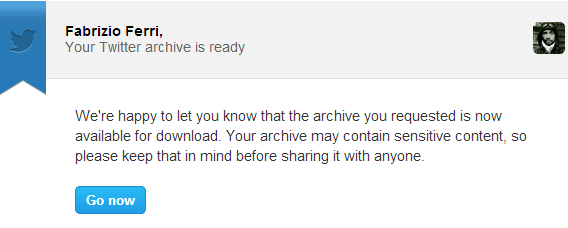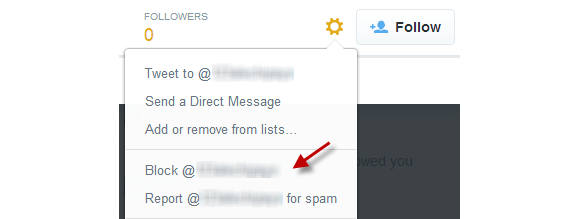Stay safe on Twitter. Simply follow these 19 tips.
Twitter is a virtual and public place. As a social network, it’s more open than Facebook or G+, as it’s designed to share and discuss events and opinions of all kinds, without filters or barriers. Anyone can follow you and you can follow anyone. In this sense, there are very few restrictions.
Due to its public nature, Twitter is also one of the most dangerous social networks for your personal privacy and security. But that doesn’t mean that you’re doomed: follow the tips below to tweet safely.
Check suspicious links
Most tweets have shortened links. Occasionally, these links lead to dangerous places, like fake forms or viruses that are downloaded onto your browser. Since clicking where we shouldn’t is the main cause for malware infection on social networks, avoid clicking on links you don’t trust.

The easiest way to know what is hidden behind a shortened link is to use a browser extension to do it for you. Some of the best are Unshort.me (Chrome) and Unshorten.It! (Firefox). You can also use AVG LinkScanner, which checks if the link is safe.
Use a unique, strong password for Twitter
The greatest security mistake you can make is to repeat passwords across multiple services, because if a hacker gets hold of one of your passwords, trying it in multiple accounts is the first thing a hacker will try. That is why you must pick a unique and secure password for Twitter. Too lazy? Use a password manager.
Don’t share your account with others
Sharing your account with others is very tempting and even fun, if that’s the whole purpose of the account. But if you care about your account information, don’t ever share your password with somebody you don’t fully trust: the more people know your password, the more likely it is it will be stolen.
Enable two-step verification on your mobile
If you enable two-step verification, you’ll have to enter a code that is sent to your phone every time you try to access your account from a new computer or phone. So, even if someone knows the password to access your account, they won’t be able to access it. To enable two-step verification on Twitter, click here.

Enable personal information verification to reset the password
Another good idea is to make Twitter ask you for personal information when you forget your password. If you tick the box on the Security menu, you will be prompted to enter your email and your phone number. It’s more reliable than just asking for the username.

Remove unknown apps from your Twitter account
The app to see who’s not following you anymore, the photo app, the chat… There are loads of apps that want access to your Twitter account, and sometimes we grant permission without really thinking about it. The result? If an evil app sneaks in with the good ones, your data will be in danger.

From time to time, check the list of apps that have access to your account from the application settings menu: just click on ‘Revoke Access’ and the app will be disconnected instantly, unable to continue reading your data. If you click on the wrong one, click again and it will be restored.
Pay attention to the signs of a compromised account
There are a number of signs that indicate that your Twitter account is compromised. Some of these signs are:
- You have been notified that you have sent direct messages that you didn’t
- You get answers to tweets you don’t remember sending
- You follow, or stop following, accounts you don’t remember
- You receive non-requested or strange security notifications
- The appearance of your profile has changed, but you didn’t do it.
If you see these signs, revoke the authorization of unknown apps (previous tip) and change your password immediately. And remember you can always use a password manager.
Don’t reply to emails that ask for your password
It could be possible that, taking advantage of the panic caused by a recent password theft, you receive an email that looks like it was sent by Twitter. If the email asks you to send your current password or write it in some form, ignore the message. In general, be wary of any suspicious email: if you haven’t asked for it, don’t click.
Download a backup of your tweets periodically
Imagine that someone accesses your account and then closes it. Or that you authorize an app that deletes half of your posts. That could be a disaster, especially if you use your account for work. Luckily, you can download full backups of your Twitter profile from the account menu. When the file is ready, you’ll receive an email with the download link.

Block those who bother or offend you
Your time is too valuable to waste it ignoring the responses of anonymous trolls. Twitter will let you block any user at any time: when you block them, the messages you have exchanged disappear from your account, and the other person won’t be able to send you tweets or tag you.

Prevent others from finding you by your email address
Your email account is a separate universe that shouldn’t be mixed with that of Twitter. When you uncheck this box, no one can find you by your email. Ideal if you don’t want your ex, creditors or customers to find your anonymous profile.
![]()
Disable photo tagging
Someone tagging you without permission can be very annoying. If you think something like that could violate your privacy, go on to privacy settings and choose whether you want to be tagged by anyone, only those who you follow or no one. You decide.

Disable tailored ads
Internet advertising is becoming increasingly intelligent and increasingly disturbing. This is called ‘behavior-based advertising’, which guesses your interests from the content you share and access online. Twitter does too, but you can disable it here.

Disable the geolocation of your tweets
For some years now, Twitter lets you attach geographic information to your tweets (via GPS). It has never been very helpful, and could be a privacy risk. Imagine, for example, that a potential thief discovers that you are temporarily tweeting from a different country: it’s an open invitation to rob your house. Disable this function from the privacy settings.

Flag inappropriate tweets, ads or images
You can also help make the internet a more secure and pleasant place. When you see images or inappropriate messages you can flag them so Twitter can take action. Don’t RT or answer messages that are clearly dangerous or illegal: just use the link to flag the message.

If you are threatened, report to Twitter and the authorities
Cyber bullying is a serious issue. If someone harasses you, threatens or verbally assaults you via Twitter, report the problems using this form. At the same time and if you consider your physical safety is at risk, contact the authorities. For impersonation, use this other form.
Think before you post personal information
Anything you post on Twitter that includes personal data could be used against you. Think before posting any of this information on Twitter. Advice? Use tools like Hootsuite, which allows you to schedule posts and follow their impact easily.
If you don’t want to worry, protect your tweets
This lock is a classic feature, and offers a way to have control over who follows you. When activated, from the security settings page, your Twitter profile will become as private as Facebook, with the exception that you can’t pick and choose who sees your tweets: all publications will be private, and only your approved followers will be able to see them.

Follow the Twitter rules
You also must be a good Twitter ‘citizen’. If you don’t want your account to be blocked, you must follow its rules: don’t impersonate another person or brand, don’t post other people’s confidential information, don’t threaten anyone, don’t violate any copyrights and don’t use Twitter for illegal purposes. If you are blocked, you can appeal the decision.
Above all, don’t let panic take over
Twitter is a public place, but it’s a safe one. If you don’t attract the attention of the bad guys, you use a good password and don’t post any compromising data, the chances of something bad happening to you are close to none.
Follow me on Twitter: @remoquete


